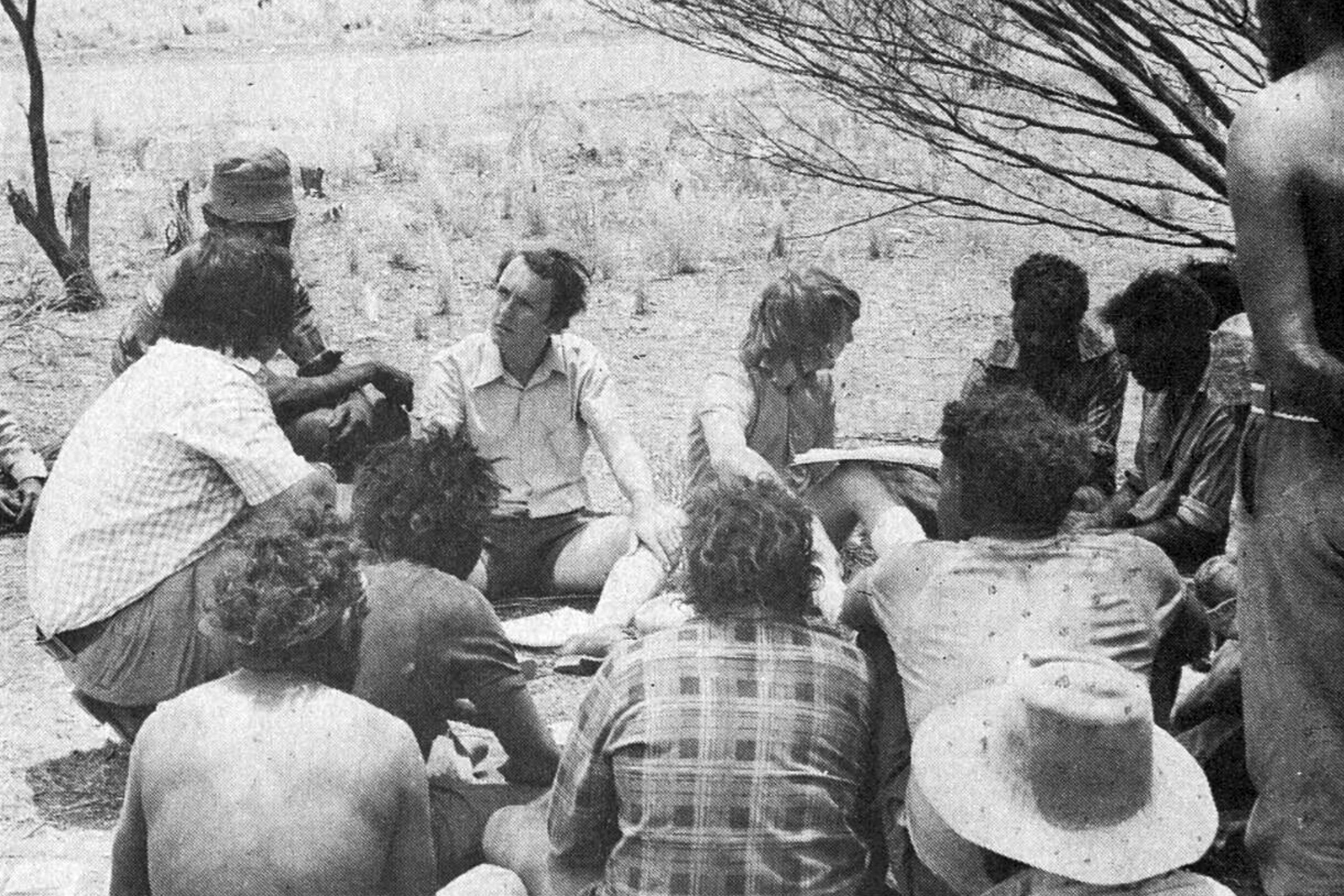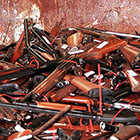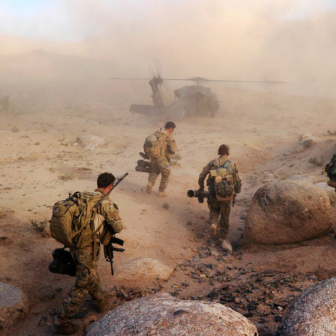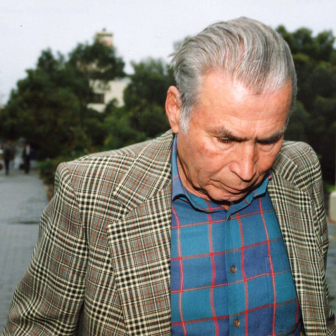Fifty years ago this a series of confrontations between groups of Aboriginal people and police at Laverton, on the western edge of Western Australia’s Great Victoria Desert, led to the arrest of large numbers of Aboriginal people. With national media interest high and the federal government troubled, the ultimate result was Australia’s first royal commission into focused primarily on Indigenous–police relations.
The confrontations at Laverton followed an influx of Indigenous people from surrounding communities over the course of December 1974 and a spate of alcohol-induced fighting among the visitors that led to requests for police reinforcements. When a housing officer at Warburton, 550 kilometres northeast of Laverton, radioed a report that a large group of Aboriginal people armed with spears and nulla nullas was heading in a convoy to Laverton, further police were flown into the town. Over the next seven days their numbers in Laverton grew from the usual complement of around four officers to twenty-six.
A convoy of vehicles carrying about seventy people, including women and children, was in fact travelling via Laverton to participate in ceremonies in Wiluna, further north. When it was intercepted by twenty-two police at Skull Creek just outside Laverton on 5 January, a violent fracas ensued.
Aboriginal informants alleged the police assaulted the Aboriginal men in the group before arresting them. The police initially swore arrest statements alleging the men were fighting among themselves. These statements were subsequently amended to allege they had attacked the police. Thirty men including several adolescents were arrested and locked in the already crowded police watch house, where many were allegedly assaulted again.
Following media interest in Perth, and the rapid involvement of the state’s comparatively new Aboriginal Legal Service, the charges against those arrested were adjourned and ultimately dropped. Yet the issue continued to simmer, and in February the federal Aboriginal affairs minister Jim Cavanaugh proposed that the two governments, state and federal, establish a jointly funded royal commission to examine the violence and recommend appropriate responses. Premier Charles Court initially refused, but when the Commonwealth threatened to establish a commission on its own, he acceded on the condition that he could appoint two of the three commissioners.
The Laverton royal commission came into being in April 1975 and reported in April 1976. The commissioners were the prominent WA barrister Gresley Clarkson QC, a judge of the Supreme Court of PNG; Aboriginal pastoralist and businessman Ernie Bridge, president of Halls Creek Shire in the Kimberley; and South Australian barrister Elliott Johnston QC, whose initial application to take silk had been overturned by Steele Hall’s Liberal government because of his membership of the Communist Party.
When the three commissioners reported in April 1976, they found that one or more incidents of violence had occurred when the police were making arrests at Skull Creek and later at the police station, but they had been unable to determine who was responsible for initiating the violence.
They did find that large numbers of men were arrested without justification, and that the police conjured up a false narrative to justify the arrests. They also found that the second set of statements alleging attacks on the police by the Aboriginal men arose after a request by the police commissioner for charges to be progressed. But they were unable to determine why the changed narrative was adopted and how the briefs came to be prepared.
The police officers who prepared the briefs intentionally frustrated the commission’s inquiries. A senior inspector named by the commissioners was found to have “failed inexcusably to demand an explanation for the change and implemented it by altering certain documents.”
Because of the lack of concrete evidence, the commission’s recommendations were fairly general, encompassing improved communication facilities, better housing and transport, strengthened police training in race relations, and the possible appointment of Aboriginal police aides and Aboriginal JPs.
On alcohol, the commission focused on how the liquor laws were administered, noting that while many Aboriginal people had been arrested for public drunkenness, no hotel licensee had been prosecuted for selling alcohol to an inebriated person for “at least many years.”
The commissioners’ high-level recommendations were generally ahead of their time, broadly aligning with recent Australian Institute of Criminology research on the underlying causes of hyper-incarceration. Somewhat surprisingly, though, they made no specific recommendations regarding the misfeasance of police, nor the attempts to mislead them, despite finding that “generally, on the whole of the evidence, we accept the substance of the Aboriginal version and reject the substance of the police version.”
The commission’s report attracted media interest and some debate in parliaments in Canberra and Perth. Premier Court declared that his government doesn’t “condone any misconduct, any over-reaction, but we do ask people to look at this very detailed report in its proper perspective.” He went on to indicate that the government would ask the Licencing Court to look at how the liquor laws might be improved to prevent situations where Aboriginal drinkers “overreact and bring about this situation.” The report’s immediate policy impact, in other words, was minimal.
The commission might seem overly restrained from a distance of fifty years, but its approach was shaped by the times and by the conservative (or perhaps tradition-bound) bent of its two West Australian members. Given the institutionally embedded antipathy to Aboriginal people, their caution might be interpreted as an effort to avoid provoking an antagonistic public and sceptical state government. In retrospect, though, the decision to hold back appears to have been neither justified nor effective.
Another clear example of institutionalised discrimination had occurred, also in Laverton, just six years before the events at Skull Creek. An Aboriginal man, Raymond Watson, was shot by police constable David Ludwig at the town’s Aboriginal reserve when he and Constable Ron Hall, along with five non-Aboriginal civilians, returned to the reserve following an earlier argument between Hall and another Aboriginal man. Hall admitted firing his revolver a number of times, and in the ensuing scuffle Ludwig fired a shotgun owned by one of the civilians.
Watson, badly wounded, was refused access to a Royal Flying Doctor Service flight and died in an ambulance heading to Leonora Hospital 120 kilometres away. A coronial investigation found that Ludwig “did not intend to kill or injure the deceased” and that the police were the “victims of a premeditated attack.” Hence, the coroner concluded, there was no basis for committing Ludwig for trial for manslaughter.
Historian Fiona Skyring has found that the police extracted signed confessions of participation in the assault on the police from the (non-literate) Aboriginal witnesses to the affray, and each of those witnesses was later convicted and imprisoned for various lengths of time. Skyring’s account identifies numerous discrepancies and irregularities in the police accounts of the shooting and the subsequent coronial investigation.
These 1969 events and some other troubling incidents had contributed to a decision in 1972 by Perth lawyers Robert French and George Winterton to set up a legal aid centre staffed by voluntary legal practitioners operating in conjunction with an Aboriginal organisation, the Aboriginal Advancement Council. Within a year, a new Aboriginal Legal Service, with full-time lawyer Graham McDonald, had begun taking on cases — and playing a key role in the aftermath of the January 1975 violence at Laverton.
An involvement in the commission changed the lives of many of the protagonists and undoubtedly helped expand the rights of Indigenous citizens. Among the commissioners, Ernie Bridge — who later said his experience on the commission fuelled his decision to enter politics — became the first Indigenous person elected to the WA parliament and the first to serve as a cabinet minister in an Australian parliament. Elliott Johnston QC went on to play arguably the most influential role in shaping the content and recommendations of the 1987–91 royal commission into Aboriginal deaths in custody.
John Toohey QC, who represented many of the Aboriginal witnesses before the commission, was appointed the Northern Territory’s first Aboriginal land commissioner in 1977 and joined the High Court a decade later. He was among the justices whose numerous decisions expanding Indigenous rights included the Mabo (1992) and Wik (1996) decisions.
Brian Wyatt, a young Aboriginal bus driver who was arrested and allegedly bashed by the police the day before the Skull Creek events, having queried the manner of arrest of his brother, later became involved in the governance of the Western Australian Legal Service. Towards the end of his life, he became a key player in the National Native Title Council, the peak body for native title organisations.
While all of these individuals have since died, their legacies continue to shape public policy towards Indigenous Australians.
Another key lesson from the commission was that there are circumstances where there is a clear role for the Commonwealth in shaping state and territory policies towards Indigenous people., Yet proactive Commonwealth engagement across the Indigenous policy domain, which derived from the success of the 1967 constitutional referendum, has faded into disuse, despite the fact that the last three federal ministers have been Indigenous. The Indigenous policy domain is less effective as a result; the challenges of Indigenous hyper-incarceration are a case in point.
Police forces across Australia continue to pursue flawed operational policies that affect disadvantaged citizens, including Indigenous citizens, more seriously. The ongoing woes of the Northern Territory police force are perhaps the most egregious, but not the only, example. An independent review in 2022 of investigations of police-related deaths in Queensland recommended changes to ensure independent investigations and the establishment of a Police-Related Deaths Advisory Board; no formal response appears to have been made by subsequent Queensland governments.
The lesson here is that ad hoc inquiries, reviews and occasional royal commissions in reaction to particular outrages, and the ubiquitous practice of the police using internal investigations whenever placed under pressure won’t change the quality of police operations. Perhaps it is time to shift the organisational model for police forces from one controlled by a single police commissioner to a statutory corporation governed by a board with community representation as well as law enforcement experts.
Even now, in 2025, Indigenous incarceration rates are at stratospheric levels. Indigenous imprisonment is six times the non-Indigenous imprisonment rate. The ABS’s latest data reports a national prison population of 44,403 persons on 30 June 2024, of which a vastly disproportionate 15,871 were Indigenous. The Indigenous prison population increased by an extraordinary 2019 people, or 15 per cent, over the previous year, despite it being identified in two specific targets in the Closing the Gap framework to which all sides of politics are nominally committed.
Police work is never easy and is shaped, implicitly and often explicitly, by the underlying intentions and mindsets of lawmakers. Each upward ratchet of penalties for breaches of the law increases the likelihood of negative police/Indigenous interactions. The events at Laverton are a reminder that these interactions have long been fraught.
The Laverton royal commission was a landmark event in Indigenous policy. The challenges it dealt with ― poor communication, alcohol abuse, poor housing, police violence in interactions with Indigenous citizens ― remain with us. As a nation, we should strive not to forget the lessons learned. •
This account of the violence at Laverton and its aftermath relies on the royal commission report and Fiona Skyring’s insightful book Justice: A History of the Aboriginal Legal Service of Western Australia (2011).




